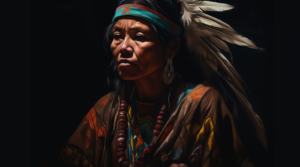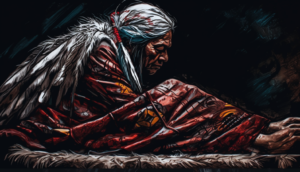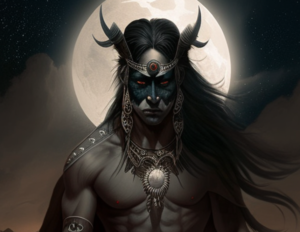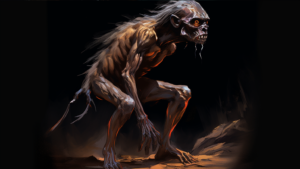-

Teelget : Navajo human lady who engaged in dark and sinister rituals
mplgmg
In Navajo mythology, Teelget is one of the Anaye, or “Alien Gods,” and was conceived by a human lady who engaged in dark and sinister rituals. His “father”, in this instance, was an antler. The round, hairy, and headless newborn was so horrifying that it was thrown away, and this horror would later become known…
-

Anaye: Navajo Old Race of Small Mythical Beings
mplgmg
The Anaye, who were an old race of beings and were known as the “Alien Gods,” were mean to the Navajo. Separating men and women was a huge social experiment that led to them. In the initial stages of our species, males and females often got into fights. They would split up, but eventually they…
-

Chindi: Navajo Sprit that Leave After the Death
mplgmg
According to traditional Navajo beliefs, a person’s chindi (spirit) leaves their body at death. Folklore suggests that this is because the individual failed to achieve world peace during their existence. The customs of the tribe also hint at the belief that coming into physical touch with a chindi can make one sick with ghost fever.…
-

Black God: First God in Navajo Mythology
mplgmg
In one version of the Navajo creation story, Black God is the first god that First Man and First Woman meet. The main job of Black God is that of a fiery god. As the one who first learned how to make fire, he came up with the idea of a fire practice. He is…
-

Skinwalker: Navajo Mythical Shapeshifter
mplgmg
Navajo culture says that a skinwalker is a dangerous witch who can change into an animal, take it over, or hide herself.”By means of it, it goes for every fours” is what yee naaldlooshii means in Navajo. There are different kinds of skinwalkers among the Navajo people. Still, yee naaldlooshii is one of the best-known…
Search
About
Lorem Ipsum has been the industrys standard dummy text ever since the 1500s, when an unknown printer took a galley of type and scrambled it to make a type specimen book.
Lorem Ipsum has been the industrys standard dummy text ever since the 1500s, when an unknown printer took a galley of type and scrambled it to make a type specimen book. It has survived not only five centuries, but also the leap into electronic typesetting, remaining essentially unchanged.






